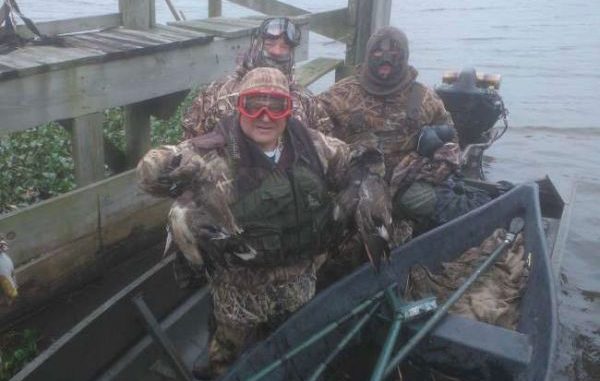
Warm, wet December likely the cause of fewer birds, Reynolds says
With 80-degree temperatures on Christmas Day and a warmer and wetter December than usual, results from January’s aerial duck survey should come as no surprise: far fewer birds were counted in the state this month compared to last.
Larry Reynolds, the waterfowl study leader for the Louisiana Department of Wildlife and Fisheries, said 1.85 million ducks were counted for the January 2016 survey — only 70 percent of December’s total of 2.64 million, 55 percent of last January’s total of 3.38 million and the lowest January total since 2009.
“The big takeaway was the big decline in the number of ducks from the December survey,” Reynolds said. “There was a big decline in Southeast Louisiana, and that decline was gadwalls and ring-necked ducks.
“What was interesting was it happened on the scaup survey, it happened on the coastal survey, it happened at Catahoula Lake and it happened in Northeast Louisiana. So everywhere we looked, except for Northwest Louisiana, we saw far fewer birds than we did in December. So it gives you confidence that what you’re seeing is right if you’re seeing it in multiple places with multiple observers.”
Warmer and wetter conditions in December — not just in Louisiana — likely contributed to the drop in duck numbers, Reynolds said. Other states’ surveys gave hints to where the birds might have ended up, with the winter distribution of birds appearing to have shifted northward.
“We had very warm temperatures and we had tremendous amounts of rainfall, not only here in Louisiana but north of us in the flyway,” he said. “They weren’t in Arkansas, because their mid-winter survey was below-average. They probably weren’t in Mississippi, because Mississippi’s mid-winter survey was right at average.
“But the mid-winter survey in Missouri was over twice their average. And when I talked to my colleagues in Tennessee and Kentucky, they didn’t have completed surveys at the time, but they were way above average. Maybe they retreated and went back north, and maybe they never got here.”
In Southeast Louisiana, ring-necked duck estimates from December dropped from 639,000 to 148,000, and gadwall numbers across the coast went from 807,000 to 501,000. The mallard estimate of 70,000 is the second-lowest on record — only the 59,000 in 2009 is lower for January.
Reynolds said it’s hard to know exactly where the ducks went. The aerial flights confirmed they weren’t on any of the 27 transect lines that make up the coastal survey, or the cruise survey of Catahoula Lake.
“In Southwest Louisiana, we stop at I-10,” Reynolds said. “So when you look at portions of Calcasieu, Jefferson Davis, Acadia, St. Landry, Evangeline, Allen, Avoyelles and Rapides — that’s a lot of land with a lot of rice fields we never count.
“So there’s a chance in a year like this when there is just so much flooded habitat everywhere that the birds just disbursed into non-surveyed habitat. Or they could have kept going further south into Mexico because they got here to the coastal marshes and the food was 2 feet under the water. The high water reduces the amount of forage available in coastal marshes.”
From hunter comments he’s received so far, Reynolds classified the 2015-16 season as poorer-than-average overall, but he said he hasn’t gotten too many complaints — mainly because hunters understand the effects the wacky weather created this fall.
“They know why their hunting is off this year. They know what the effect of warm temperatures and extensive shallow flooding up and down the flyway mean,” he said. “They know that it was 84 degrees on Christmas Day, and that’s not right. And they killed a bunch of blue-wings on the opening day of the second split, and that’s not right.
“So I think they know.”
To read the complete January 2016 aerial survey, click here.


